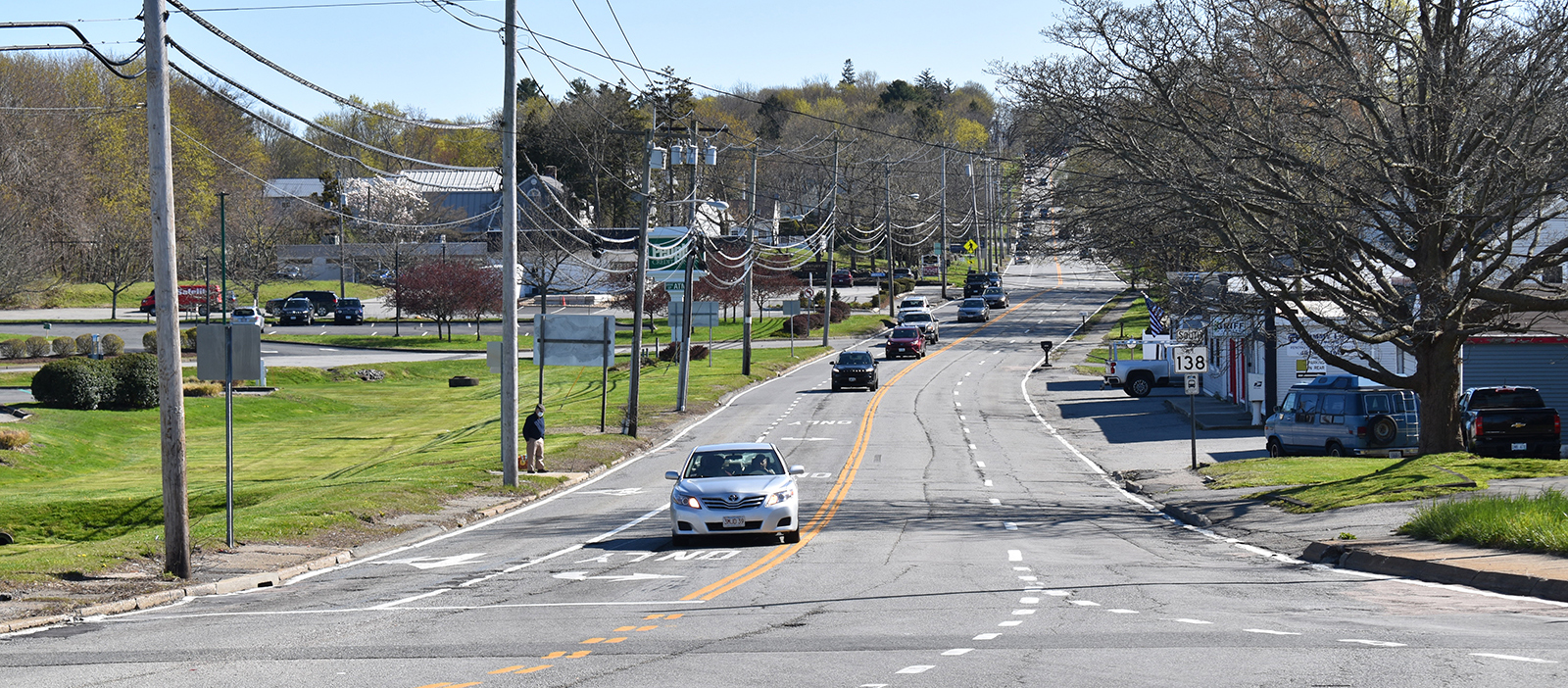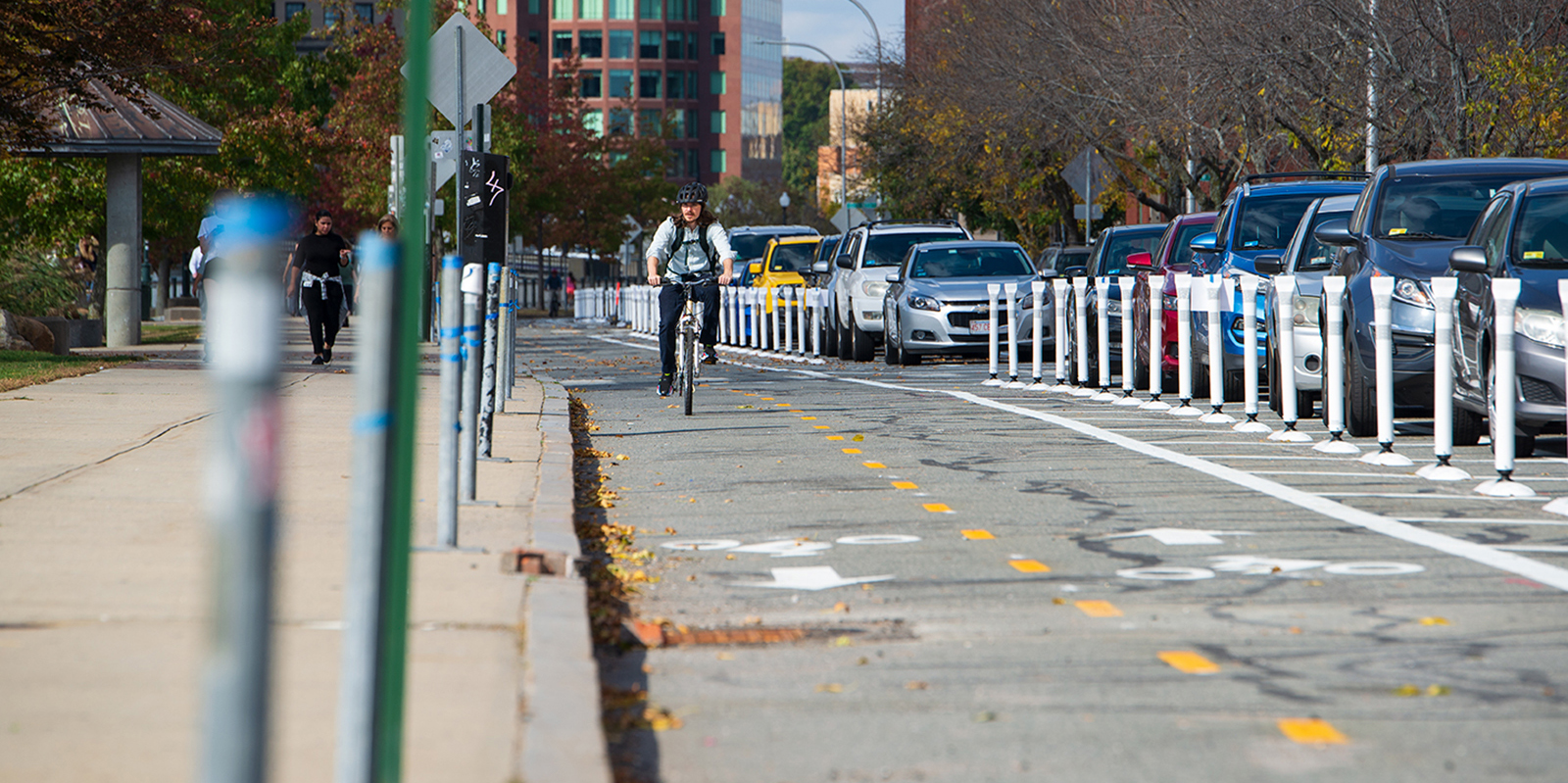Getting Off Fossil Fuels Requires Transportation Makeover
Local perspectives on the steps we need to take
February 15, 2024
Drastically and rapidly reducing the amount of fossil fuels we burn requires an all-out effort, from individuals and households to businesses and governments. For example, the state of Rhode Island is largely focused on implementable small projects that nibble around the emergency’s edges when what is needed is building big-impact efforts.
Those efforts need to start with the transportation sector, which accounts for nearly 40% of Rhode Island’s greenhouse gas emissions — the state’s largest percentage of climate-changing pollution. Until we get serious about building an efficient and reliable public transit system and significantly reducing vehicle miles traveled, any progress we make with smaller but important efforts will be negated.
Our transportation system can no longer be centered on individuals driving around in cars. It’s time to provide safe and reliable transit options by funding, supporting, marketing, and building public transit, bicycle, and pedestrian infrastructure. Cars can no longer dominate our transportation decisions. The Transit Master Plan and the Bicycle Mobility Plan show us the way forward.
The Department of Environmental Management and the Executive Climate Change Coordinating Council (EC4) are working on what types of efforts Rhode Island should support as “priority projects” within the following seven sectors as identified by the Environmental Protection Agency: transportation; electric power; buildings; industrial; waste and water; agricultural; and carbon removal.
The last one should be ignored if it is referring to carbon capture. The idea that we can, or even should, build vast engineering monstrosities to catch climate-changing pollution and force it back into the ground is a fossil fuel boondoggle. It’s a bogus solution to a mounting crisis. It’s a waste of money and time, neither of which we can afford to squander.
But the EPA does start with the biggie, and probably the most difficult one to address, because the car is so ingrained in our culture. Weaning Rhode Islanders off supersized pickups and gas-guzzling SUVs and eliminating households where vehicles outnumber people will take a wicked pissah public transit system.
To help trigger a transportation-changing movement, Rhode Island could also make parts of Providence car-free (Kennedy Plaza/Burnside Park and Westminster Street, for starters) and/or set congestion pricing. New York City is set to become the first U.S. city to introduce a fee levied on motorists that is intended to convince enough people to avoid driving at rush hour. The plan includes a significant tax on drivers entering southern Manhattan, which aims to cut down on traffic congestion and reduce greenhouse gas (GHG) emissions.
As Rhode Island moves closer to fast-approaching Act on Climate mandates, DEM is working on submitting an application to the EPA’s Climate Pollution Reduction Grant (CPRG) planning process. Before the state can apply for funding to support projects that reduce GHG emissions, however, it is required to submit, by March 1, a Priority Climate Action Plan (PCAP).
Rhode Island’s PCAP is expected to include a list of near-term, high-priority, implementation-ready projects to reduce climate-changing emissions. The projects will draw from the recommendations in the Rhode Island 2022 Climate Update, priorities identified by EC4 agencies. Rhode Island will then apply for CPRG implementation grant funding no later than April 1, according to state officials.
To truly reduce the state’s carbon footprint in any meaningful way, the smaller projects EPA grants will fund need to be in support of bold, big actions.
How do we begin? To answer that question, ecoRI News reached out to three local experts and asked them, via email, a question: List the five steps we need to take to get off fossil fuels.
I left the question purposely broad because I wanted to see where each went with their answer.
Jamie Dickerson, senior director of clean energy and climate programs for the Acadia Center, noted the complexity of my question.
“There are a number of instructive ways to break this question down. One could approach it by economic sector, from a societal or governmental perspective, or from an individual’s or household’s viewpoint,” he wrote. “In our answer, we’ve opted to interpret ‘we’ broadly, meaning we’ve highlighted universal pillars of action that all actors in our society — from policymakers to corporations and households — will need to pursue swiftly to transition us off our reliance on fossil fuels and drive down our emissions, both here in Rhode Island and across the region, nation, and globe.”
Dickerson noted that all five of the Acadia Center’s steps are “underway in some sense, but they all must be accelerated and expanded to avert the worst impacts of climate change.”
Maximize efficiency. Reduce energy consumption and vehicle miles traveled through vital investments in an energy-efficient building stock and a robust public transit system.
Deploy renewables. Build wind, solar, other renewables, and energy storage rapidly to green our electricity supply, aided by significant new transmission line capacity and grid-enhancing technologies to help even more green electrons flow through our power lines, existing and new.
Electrify our end uses. Decarbonize our buildings and vehicles, primarily by converting from combustion technologies — e.g., boilers and furnaces, internal combustion engine vehicles — to efficient, electric technologies such as air- and ground-source heat pumps, heat pump water heaters, thermal energy networks, electric vehicles, and zero-emission buses and trucks.
Build a flexible, dynamic grid. Revamp our utility regulatory system and our grid to be more intelligent and dynamic and to better harness the abundant new flexibility provided by distributed energy resources, from EV charging and heat pump hot water heaters to smart thermostats, solar+storage systems, and other grid-interactive technologies.
Invest and innovate. Invest in deploying cleaner energy in every sector of the economy via both the public and private sectors, and for the most challenging remaining sectors to decarbonize — heavy industry, shipping, aviation — we must support research and development for breakthrough technologies, pursue first-of-their-kind green procurements, and be a laboratory for piloting and demonstrating new solutions.
Larry Chretien, executive director of the Green Energy Consumers Alliance, also noted the layers to my simplistic question. He asked if I was thinking of what five things a household can do or five things the state ought to do?
“If it’s at the home or business level, we encourage people to think about the 3 big things that burn fossil fuels — transportation, buildings (heat), and electricity,” he wrote.
He noted that thanks to the state’s Renewable Energy Standard, electricity emissions are going down steadily. To accelerate that process, Chretien said municipalities should adopt community choice aggregation. Seven Rhode Island cities and towns have already done so — Barrington, Central Falls, Narragansett, Newport, Portsmouth, Providence, and South Kingstown.
“If your home or business has a roof that is south-facing, unshaded, and sturdy, solar is going to be a good move financially, thanks to incentives from the state and federal Inflation Reduction Act,” he wrote. “If you are thinking about what the state ought to be doing — it’s all about increasing electrification through regulation and incentives.”
Terry Gray, DEM’s director and the EC4 chair, shared his five steps to get off fossil fuels:
Grid. Support a decarbonized electric grid by integrating wind and solar resources with grid storage. Related, continue proactive grid infrastructure planning with utilities, regional partners, and state regulatory entities.
Transportation. Invest in the electrification of our transportation infrastructure (incentives for electrifying light-, medium-, and heavy-duty vehicles and the associated charging infrastructure). Related, electrify the state fleet and associated non-road vehicles and equipment.
Green buildings. Examine policies or standards for new construction (e.g., via energy code updates) and expand incentive/assistance programs that encourage retrofitting existing building stock. Related, electrify the heating and cooling systems of all state buildings.
Public transit. Support and expand statewide transit options.
Municipal and community assistance. Increase capacity for Rhode Island cities and towns to be able to make investments in cleaner energy, cleaner transportation, and efficient buildings; paying particular attention to those in environmental justice communities in transitioning to renewable energy.
A few more ideas. At the household level, when it’s time to replace your gas stove, buy an electric one. Remove propane- and natural gas-burning fireplaces. At the municipal and state levels, let many of the areas along roads and highways that we routinely mow to grow into meadows.
We’re also going to need more electricians.
Note: Rhode Island is looking to support projects that will help advance the goals of the EPA’s Justice40 Initiative, which aims to deliver 40% of the overall benefits of federal investments to marginalized communities.
Frank Carini can be reached at [email protected]. His opinions don’t reflect those of ecoRI News.




Maybe the first step in transportation is to fire Alviti
Rhode Island taxpayers already have the 10th highest personal tax burden in the country, so any of these pie-in-the-sky proposals must be paid by those individuals and groups promoting them, not taxpayers. Saying the US Gov’t is going to pay for them is a no-go. The US deficit already increases $218 million per hour.